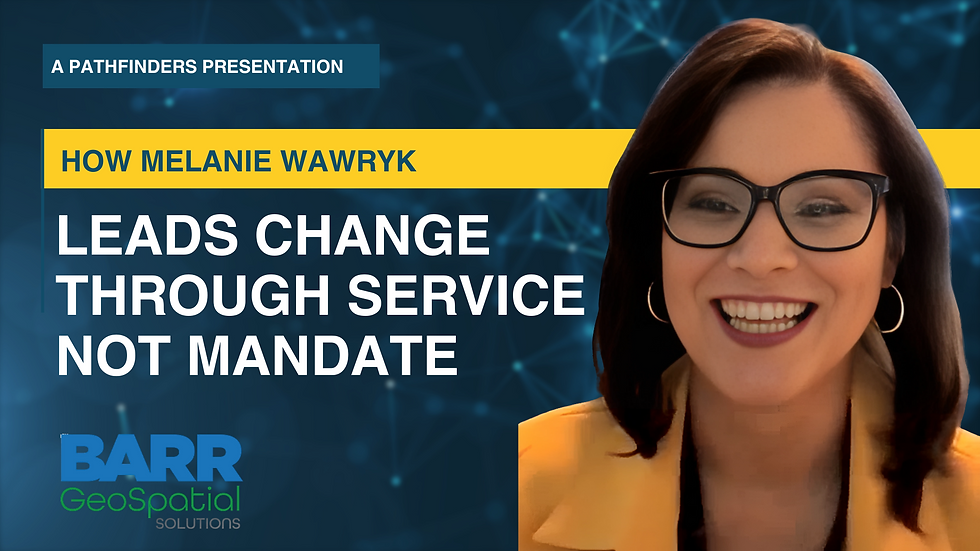Charles Altendorf: From Warehouse Floors to Mapping the Future
- Jeff Lamb

- Mar 15, 2024
- 2 min read
Updated: Aug 29
When Charles Altendorf graduated in 2011 with a geography degree, he had a dream—and no job. “I worked in a warehouse for six months,” he recalled. “I was working six 10-hour days just trying to stay productive.” At the time, the economy had stalled, and despite his passion for making maps, Charles found himself questioning if there was even a future for him in GIS.
That period of doubt could have ended his journey. Instead, it became a catalyst. Through a family connection, Charles landed a short-term internship with a regional government agency. It wasn’t glamorous, but it was a start—and it lit a fire. Over the next decade, Charles would go on to work in nearly every sector of GIS: surveying oil pipelines, engineering firms, regional utilities, and now, Kentucky American Water. Along the way, he picked up a new title: President of the Kentucky Association of Mapping Professionals (KAMP), a 330-member statewide community.
“There’s something so rewarding about bringing people together in the mapping community,” he said. “Now people call me asking if I know anyone looking for work in GIS—and I do. I know her. I think she’d be a great fit.”
Charles’s story is rooted in real-world impact. At his previous job with Hardin County Water District, he improved the accuracy of the billing system’s location data to 94%. “That’s just so helpful,” he said. “It means people are being billed properly, we’re not wasting money, and everything works smoother.” More recently, he led a cleanup of customer address data using new 911 location standards—work that could help save lives by getting emergency responders to the right place faster.
But Charles isn’t just a data wrangler. He’s a community builder. Every month, he hosts a regional GIS social where attendees range from immigrants and career-changers to recent grads and long-time professionals. “GIS just seems to be a home for people,” he said. “It breaks down all barriers. We all get the same joy from seeing a geocoder go from 70% accuracy to 94%.”
Still, none of this came easy. Whether it was cold-starting a GIS department from scratch, teaching himself new platforms like QGIS and AutoCAD, or navigating massive data challenges, Charles has always leaned on grit and humility. “Every time I think I have something figured out, there’s always someone with a better idea,” he said.
“That’s what makes this work so amazing—you have to stay open, stay learning."
Looking ahead, Charles believes the future of GIS lies not just in real-time data or emerging tools, but in stewardship. “It’s not about collecting data anymore. The public is doing that. Our role now is to curate it, protect it, and make sure it’s being used ethically,” he said.
“That’s where we’re going. If you don’t like it, well—you’re going to have to hunker down.”
For Charles, that future also means mentorship. “I’ve had such good mentorship bringing me up, it would be a travesty not to give it back,” he said.







Comments